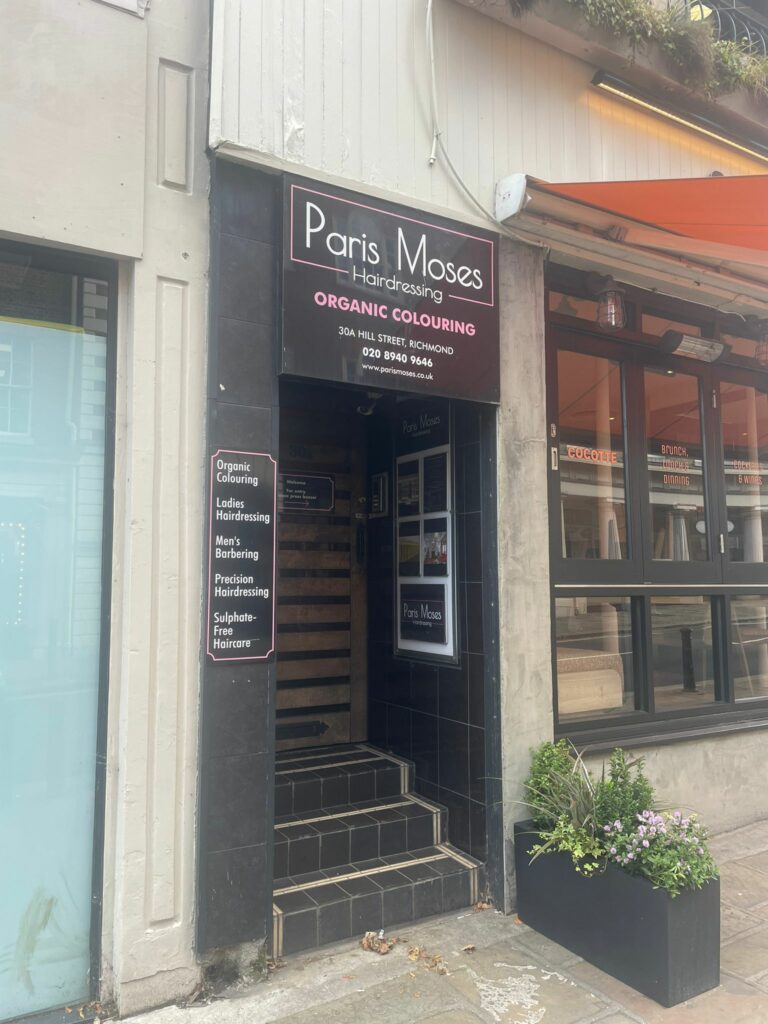What Does Organic Hair Color Mean?
Eating organic, using organic products, organic farming, organic lifestyle – you name it, organic is a very hot topic right now and the lifestyle spreads as we speak. But is it possible to colour your hair with organic hair colour?
Does 100% Organic Hair Color Even Exist?
Okay… We are giving it away pretty easily… If you are looking for 100% organic hair colour we have to disappoint you.. 100% organic hair colour does simply not exist BUT we would like to explain what kind of hair colour you should choose preferably, what you should be aware of and what kind of ingredients you should know and avoid.
As a hairdresser, we already know that the hair cuticle needs to be opened for permanent colouring – otherwise the colour will not last. The so-called PH adjuster is what does the job. Unfortunately, there is no way going around something synthetic, here. .But what makes the entire difference are the brands of the ingredients chosen to function as a PH adjuster. Some of the most common ingredients used as PH adjusters are:
- Monoethanolamine (MEA)
- Ethanolamine
- Cocomide MEA
- Aminomethylpropanol (AMEA)
But what do these ingredients mean? If you see these ingredients in hair colors it’s a step in the right direction! All these ingredients serve as a PH adjuster and replace the bad, bad (you know what…) AMMONIA! Let’s make one thing clear: Say NO to ammonia! It’s better for you us as a hairdresser, you as a client and the environment.
What Is The Difference Between MEA vs. Ammonia in Hair Colors?
What is ammonia? Good question! Ammonia is a very harsh chemical that unfortunately acts as a very common ingredient within the beauty industry. The role of ammonia is twofold: it opens the hair cuticle to facilitate the oxidation process which lightens the natural colour of the hair and helps the added colour to develop. The level of acidity in ammonia is what opens up the hair cuticle and works as a PH adjuster. Human hair is naturally acidic and needs an alkaline counterpole to open up. Many, many years ago scientist working in the beauty industry sought for cheap solutions and that is where ammonia came into the picture. A lot has changed within the beauty industry ever since, but because ammonia is such a cheap solution, not all hair colour brands have taken the natural step towards a less harsh and more gentle hair colouring process. But ammonia is not only harmful to you the client. Unfortunately, many hairdressers and stylists suffer from severe health conditions as a consequence of working with hair colours containing ammonia. Common side effects are headaches, chronic coughs and rashes.
What is MEA? Another good question! Do you remember the list of PH adjusters mentioned earlier? MEA is the more/most? natural and gentle replacement for ammonia. Cocamide MEA is derived from the fatty acids of coconut oil and monoethanolamine (MEA). The first thing you should look for is the amount of MEA in hair colours. As stated, the alkaline PH adjuster in hair colours is synthetic and it’s therefore important to look for hair colours with as little MEA as possible. This is not only in order for the hair colour to be as natural as possible, but it has even been proven that a too high amount of MEA will make the hair colour fade faster because of the cuticles’ inability to close and lock in molecules. The PH level of the hair will alter drastically if the amount of MEA is too high. The cuticles will be unable to close and you the client will be left without any shine in the hair.
Why Natural Hair Colors Can Be High Functioning
Okay, so we know that ammonia can be replaced with a more natural solution that is less harmful to us as a hairdresser and to you the client. But what about all the other ingredients in hair colours? When you look at an ingredient list of any product, the list will be in descending order of predominance. This means that the ingredients with the largest amount will be listed first and then the list goes on and ends with the smallest amount. When you read an ingredient list, look for ingredients you know what is or what it means.
Yes, Natural Hair Colours Can Cover Grey Hair
For a natural hair colour to be permanent and cover grey hair it needs to contain P-Phenylenediamine (commonly referred to as PPD). PPD is yet another chemical substance, supporting the fact, that 100% organic hair color does not exist. PPD is colourless and therefore requires oxygen to become coloured.
PPD is also known as oxidative and is permitted as a hair colorant ingredient by the European Cosmetics Directive. This means PPD is allowed for use in hair colourants across the 27 EU member states. On the contrary to some media reports, PPD is not banned anywhere and is not dangerous. However, PPD may only be used in hair colourants and only up to a certain level (up to a maximum of 2% when applied to the hair).
If you are not allergic to PPD you can definitely use colours that contain PPD in small amounts. In small amounts PPD it is not as harmful as you might think. So if you want 100% grey hair coverage, hair colours that contain PPD are inevitable, simple as that.
Clients! Here Is The Truth About PPD In Hair Colors
Is PPD bad for you Short answer: Yes.
But, don’t believe all of the rumours out there.
Like most things in life, do not resolve to absolutes. It is not always a yes/no question. When it comes to PPD, it is more a question of quantity and part-whole.
It is possible for you to have a reaction to PPD, but the majority will not have the likelihood to do so. The chance of reacting badly to PPD is very small and the chance of developing a serious allergic reaction is even smaller. All new clients to the salon or colouring their hair are required to have a skin test 48hours previous to their colour service. If you are unfortunately allergic to PPD you can use hair colours with PTD as an alternative. PTD is a sister compound to PPD and performs more or less the same, but PTD is less aggressive. PTD is chemically called Toluene-2.5-Diamine and belongs in the same family of phenylenediamines. You would still require a skin test.
Here is the whole truth about PPD and PTD:
When we talk about PPD and PTD the world is not black and white. Here is a simple example: Let’s say 9 people are getting a reaction to hair colour. 3 of them will be allergic to PPD. Another 3 will be allergic to PTD and the final 3 is allergic to both. But allergy comes in different forms. Some are just slightly allergic and will only feel a small pinching or itching and some are hypoallergenic and will show severe swellings and even pain.
As mentioned before, the maximum amount of PPD allowed in hair colours is 2%. The maximum amount of PTD allowed in hair colours is 4%. But why is the amount of PTD twice as high as PPD, you ask? PTD is less harmful than PPD and is therefore used as a more natural substitute by responsible brands, and even though PPD and PTD are similar substances, their effect is not, even though they perform the same. But don’t let this alarm you. All hair colours containing PPD or PTD are safe to use if you follow good guidelines and conduct patch tests properly. This is because all products created are strictly regulated and there’s a maximum limit to the amount of PPD/PTD a product can contain. Do not be afraid of the ingredient PPD or PTD! They are necessary in order to make the hair colour permanent. You should only seek alternatives without PPD or PTD if you suffer from a serious allergy to either one or both.
We would like to give you a more concrete example of PPD and PTD in hair colours. For this, we would like to introduce NATULIQUE Natural Hair Colours. NATULIQUE is a danish family brand who distributes natural hair colours to salons all over the world. NATULIQUE works from a simple standpoint; to use as many certified organic ingredients as possible, and provide the beauty industry with a safer and more sustainable alternative, with fewer chemicals and better functionality.
Below we give you an overview of the amount of PPD and PTD in natural hair color brands on the market today.
| Measured concentration in % | NATULIQUE | Competitors | Maximum concentration after mixing (Cosmetic Directive) |
|---|---|---|---|
| P-PHENYLENEDIAMINE | 0.04 | 0.25 | 2 |
| TOLUENE-2.5-DIAMINE or TOLUENE-2.5 SULFATE | 0.05 | 2.2 | 4 |
The lowest concentration of PPD found in NATULIQUE is 0.04% and the concentration of PTD and/or Toluene-2.5-Diamine found in NATULIQUE is 0.05%. Compared to NATULIQUE’s competitors on the market which contains up to 0.25% PPD and 2.2% PTD and/or Toluene-2.5-Diamine.
What Have We Learned?
Summing up, there is no such thing as 100% organic hair colours BUT there are some natural hair colours out there and even some with certified organic ingredients. You should definitely avoid hair colours containing ammonia, as this is toxic for both you and your hairdresser. The compound that replaces ammonia is MEA and is derived from coconut and is, therefore, more natural. What makes the hair colours permanent is a compound known as PPD or PTD but these ingredients are not harmful to you if you don’t have an allergy and only added in small amounts in order to make the hair colour permanent.
This is the lay of the land. Are you surprised? But who are we to say this? Sheen hair has partnered with NATULIQUE. Who provide professional hairdressers with natural, professional hair colors containing certified organic ingredients that are not tested on animals.
Whatever your needs we have 84 different shades of fabulous in three different lines:
Natural Hair Colors containing 73 different colours that are all:
- 100% Ammonia-Free
- 100% Lauryl Sulfate-Free
- 100% Parabens Free
- Contains 0,04% PPD which means that the colours give 100% grey coverage
- 98.02% derived from natural sources
ZERO Hair Colors containing 11 different and natural shades all with:
- ZERO PPD (contains 0.05% PTD)
- ZERO Resorcinol
- ZERO Ammonia
- ZERO Parabens
- ZERO SLS
- With Added Natural Fruit Acids
- With Organically Farmed Plant Extracts
- Added Organic Oil Complex
- Added Beneficial Proteins
- No Animal Derived Ingredients
Fashion Douce Hair Colors which is our douce colours where only your imagination sets boundaries. The 6 colours Lavender, Peach, Blueberry, Silver, Lychee and Lemon are semi-permanent.
If you have any further questions on any of our hair services please book in for a complimentary consultation.
Call 020 8940 6464 or drop in the salon.


